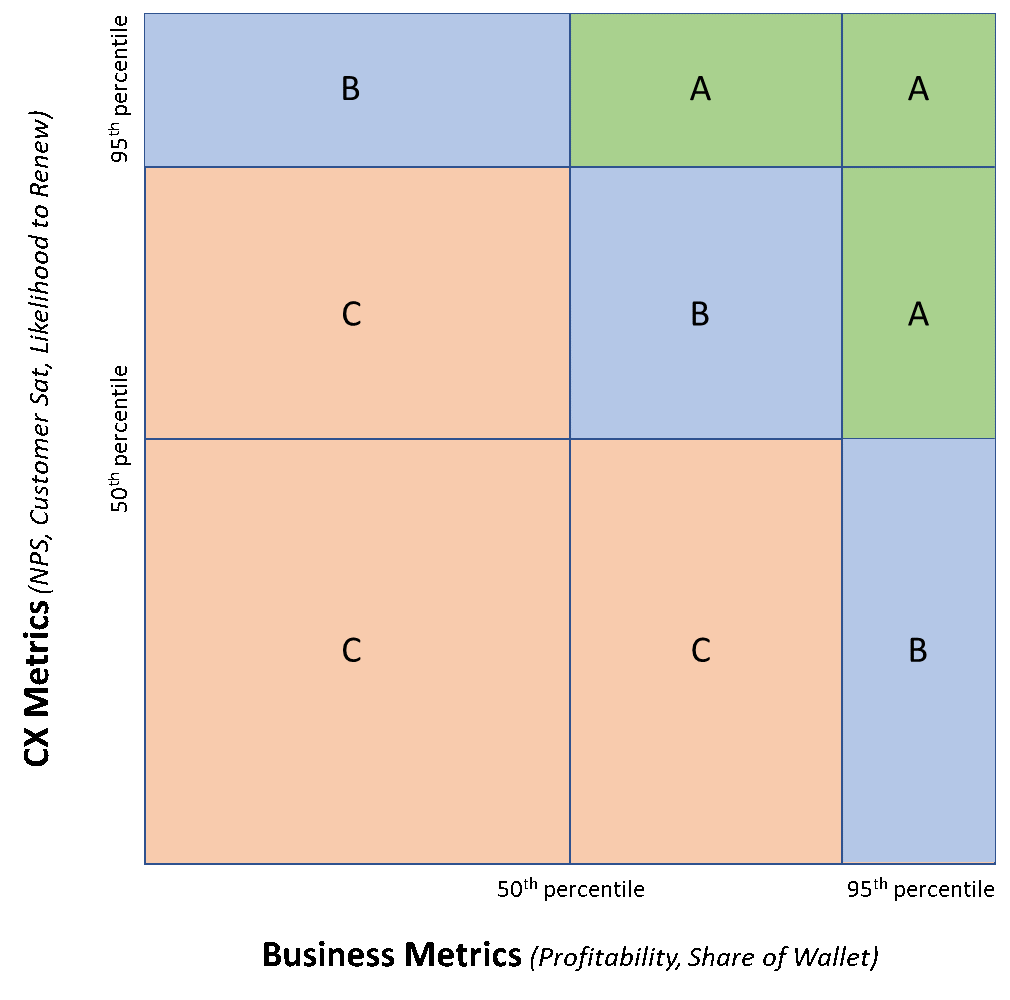“When all customers are important…none will be.” – Syndrome from The Incredibles (slightly paraphrased)
Are all customers worth the same to your business? No! But odds are, your CX program doesn’t recognize this.
Which is odd, since other departments don’t have a problem with this concept. Sales gives higher discounts to some customers. Customer service often assigns different service levels to special customers. Leadership targets their time to only a small percentage of clients.
If you don’t build a specific customer hierarchy, the silos will do it themselves – and likely in an uncoordinated way. That’s a risk.
Take control of the situation. Here’s a plan to build your customer hierarchy.
- Meet independently with sales, marketing, customer service, and other key partners to learn how they segment customers. Do they? Is it consistent across silos? If it is, you can stop this effort, and start focusing on how to adapt your CX program to mirror this – showcase the hierarchies in your CX measurement and feature it in your training.
- Analyze your customers for both business and CX outcomes. If you have per-customer profitability or Share of Wallet data, create a 3×3 grid with CX measures and your business data. I’ve included a sample 3×3 you can use below. (If you don’t have this data, stop this effort and work on getting it first. It’s that important.)
- Use this data to create your candidate hierarchy. I’ve included a potential model. You may need to fiddle with these numbers some – move the 95th percentile to 90th or 97th, for example.
- A-Level Customers. Customers in the top 5th percentile for the business metric and at least the 50th percentile in customer satisfaction scores should be your top priority. Add in those in the top 5th percentile in terms of CX metrics who are also in your top 50% of profitability, as they have strong potential. These are customers who love you, do a ton of business with you, and would likely want to work with you more. Own them.
- B-Level Customers. Still important, but with less profitability and/or love for you. They warrant less investment. Yes, you still want to treat them right. But reserve your perks for A-Level Customers.
- C-Level Customers. These represent most of your revenue but less profit. They’re important – they provide the scale that allows you to serve your best customers less expensively. But those who are less profitable and less happy with you are probably more expensive to serve with less return.
- Once that’s complete, work with your leadership to refine the list. There are likely some customers who don’t fit into this neat design, such as legacy clients, innovation partners, or those with big opportunities. But be careful with adding new A-Level Customers. It needs to mean something to be A-Level. Each sales rep will try to convince you her best client has huge potential if you just include them at the top of the hierarchy. For every client added, one should be removed. That’s hard to do.

Once you create this hierarchy, own it. Teach it to the organization, and work with your silos to implement special treatment to your top customers. If product is constrained, ensure your best customers get it first. If you’re looking for innovation partners, start with the top of the hierarchy. Ensure your contact center prioritizes service levels for your best clients, possibly creating a special team just for them. Maybe it’s even worth providing special payment terms. These are the customers who are paying your bills, and they have the potential to do even better once you show them the love.
To many CX leaders, this entire thinking will be alien. All customers are important! But, while Syndrome was an evil character, he did have this one idea right. When everybody is special, nobody is.
And don’t you want your best customers to feel special?



